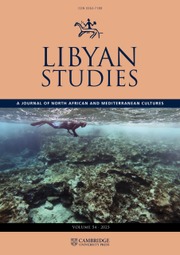No CrossRef data available.
Article contents
The Karawah and Qarabulli Members of the Jifarah Formation – Late Pleistocene Aeolian and Lacustrine Deposits – Northwest Libya
Published online by Cambridge University Press: 03 March 2015
Abstract
The Qarabulli Member of the Jifarah Formation in Wadi ar Raml comprises a thin sequence of chalks, chalky silts and carbon-rich silts draped over a dune-shaped top surface to the Karawah Member. The carbon-rich layers contain rootlets and are interpreted as marsh deposits. The chalks display thickening in the lows and thinning on the highs and yield a mollusc fauna indicative of deposition in semi-permanent, freshwater ponds. Correlation shows that basal beds in the lows are older than those on the highs confirming that the member was deposited on a pre-existing dune-shaped surface. Internal sedimentary structures in the Karawah Member sands suggest that they, and hence the dune-shape, are aeolian in origin. Drowning of the dunes was gradual, initially flooding the lowest troughs and eventually lapping over the crests. Conditions fluctuated between lacustrine and marsh before final inundation resulted in deposition of chalk over the whole section. Destruction of lamination in the underlying aeolian sands of the Karawah Member indicates that the ponds were sourced by upward movement of ground water.
- Type
- Articles
- Information
- Copyright
- Copyright © Society for Libyan Studies 1992


